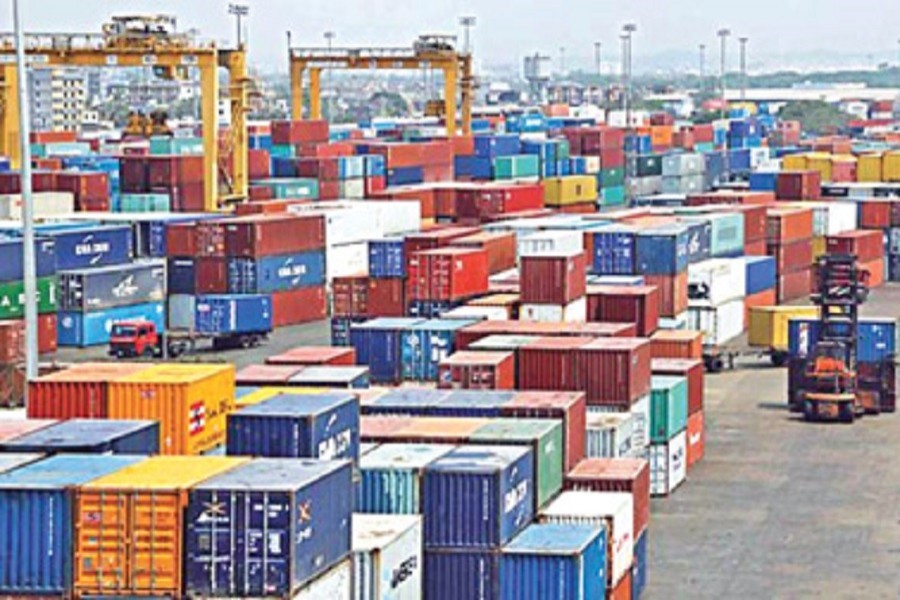While global trade in goods in the pandemic times has shown visible changes with some positive movements lately, that of services seems to be far from showing any sign of resurgence. According to the World Trade Organisation's (WTO) statistics global services trade in the third quarter of 2020 fell 24 per cent compared to the same period in 2019. This represents 'only a small uptick from the 30 per cent year-on-year decline registered in the second quarter, in marked contrast to the much stronger rebound in goods trade', according to the WTO.
As for merchandise trade, it appears, on the basis of customs data, that more than 70 countries accounting for around 90 per cent of global trade experienced a rebound beginning from the second half of the last year picking up further in November. The value of global merchandise trade saw a 4.0 per cent year-on-year increase for the month.
The picture partly reflects purchases that were deferred earlier in the year due to the pandemic as well as weakening trade growth in the closing months of 2019 because of heightened trade tensions at that time. There is considerable variation across regions in the pace of expansion. Asia and Europe saw their exports increase in November by 10 per cent and 6.0 per cent respectively. However, exports were still down 5.0 per cent in North America and 2.0 per cent in Latin America and the Caribbean. The recovery remains incomplete: the total value of global merchandise trade between January and November 2020 was 8.0 per cent below the same period in 2019, as calculated by the WTO and UNCTAD.
The case with services trade is far different. Preliminary data suggest that in November, services trade was 16 per cent below the 2019 levels. Prospects for recovery in near future remain poor since the second wave of COVID-19 infections necessitated stricter lockdown measures in many countries, with tightened restrictions on travel and related services extending into the first quarter of 2021. The restrictions, particularly in Europe and North America, drastically halted services trade to and from these countries. The latest statistics confirm earlier fears that services trade would be harder hit by the pandemic than goods trade, which was only down 5.0 per cent year-on-year in the third quarter. Foregone expenditures on tradable services could be directed elsewhere, with consumers shifting to goods instead.
There is more to the issue. While the pandemic has stalled generating scopes for services business --- both domestic and international --- goods trade though faced with temporary setbacks was somehow able to ride out the difficulties because despite shrinkage in demand, production, barring the early period of the pandemic, was not totally stopped. As a result, export-dependent countries with especialisation and competitiveness in certain major products did continue with their production-- though in lower volumes than in normal times. This was the case with many countries, including Bangladesh, which given their competitive edge in global apparel market came out of the initial deadlock as overseas demand, though sluggish, kept growing gradually. On the other hand, in case of services the stark fact remains that unlike goods, services cannot be stockpiled. Due to cancelled flights, holidays, closure of restaurants and hotels, and stoppage of cultural and recreational activities, the impact has been unprecedented.
The worst that came for service sector was from travel restrictions and bans. Not just the airlines that were severely struck, but it was the countries reliant on tourism which suffered most, and although flights are gradually opening up, the ordeal is far from over and may take a toll on their economies for a long time. Travel remains the most affected service sector, down 68 per cent globally compared with the same period of 2019. In the third quarter of 2020, spending by international travellers was down 88 per cent in Latin America and the Caribbean, 80 per cent in both Asia and Africa, 78 per cent in North America, and 55 per cent in Europe, according to WTO, UNCTAD and ITC estimates. The relaxation of travel restrictions in Europe during the summer months produced only a modest rebound in services trade in the third quarter.
According to WTO estimates, trade in services such as construction, recreational, legal, and financial services in the past year repeated uneven performance. Most sub-sectors contracted, with computer services registering a notable exception. With construction projects delayed or postponed in many countries due to the pandemic, global construction exports were down 16 per cent year-on-year. Audio-visual, artistic and recreational services also saw double-digit declines (-14 per cent). Legal, management, accounting, and advertising services saw a tepid year-on-year rebound of 1.0 per cent. Financial services, however, increased by 2.0 per cent globally, with exporters in different regions recording positive growth. However, computer services remained the most dynamic sector in the third quarter, up 9.0 per cent due to increasing global demand for cloud computing, platforms and virtual workplaces.
In Bangladesh, although the overall picture of services trade is more or less the same, there is a certain variant too. While most advanced countries are accustomed to mobile payments and online shopping for quite a while, these, not so popular before the pandemic in this country, gained high acceptance across many sections of the people.
There is no ready prescription for the services trade to get back on its track. It all depends on how quickly things return to normal, with of course some resetting that most observers believe to be the next game changer.


